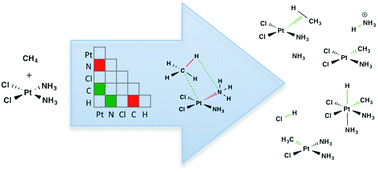Finding reaction mechanisms, intuitive or otherwise
Abstract
Chemical reaction mechanisms have been frequently studied using computational simulations, but these tools have been primarily effective at examining reaction paths within the scope of chemical intuition. To determine reaction mechanisms that were not already preconceived by chemists, nonstandard simulation tools are required. This perspective introduces new methods developed by the Zimmerman group that are designed to uncover sequences of elementary steps, from first principles and without substantial human guidance. Results from the areas of organo catalysis and transition metal catalysis indicate that new frontiers of knowledge will be gained through continued development and application of reaction discovery simulation techniques.



 Please wait while we load your content...
Please wait while we load your content...